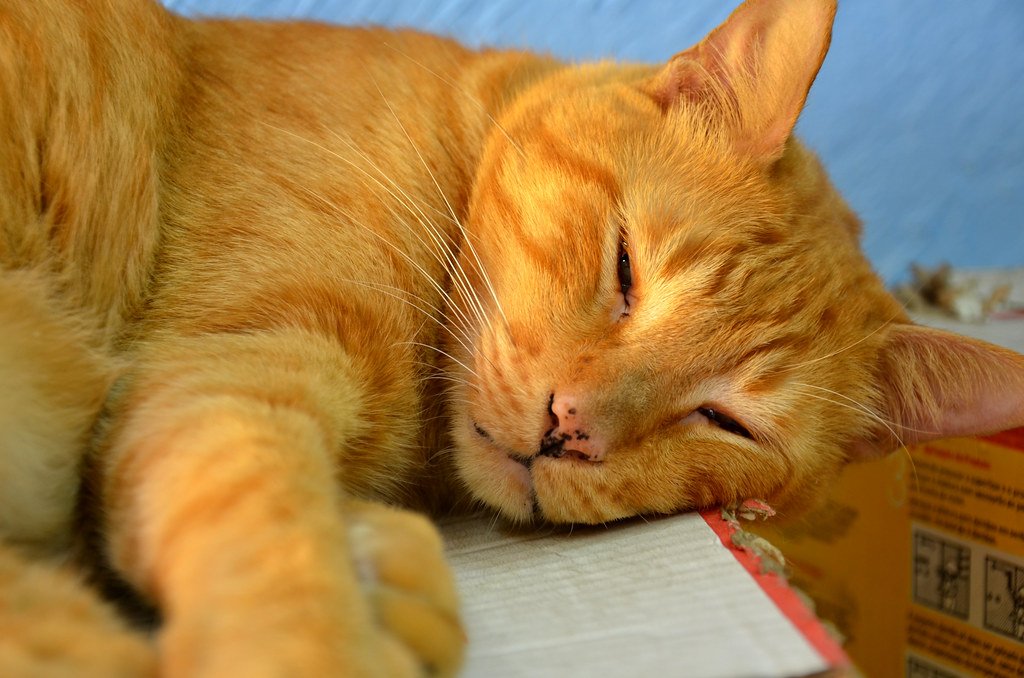Overfeeding Your Feline Friend

That chubby tabby might look adorable, but those extra pounds are silently wreaking havoc on your cat’s health. Many cat owners mistakenly think a round belly equals happiness, but obesity in cats leads to diabetes, joint problems, and a shortened lifespan. The “free feeding” approach where you leave food out all day is one of the biggest culprits. Your cat’s begging isn’t hunger – it’s learned behavior that tugs at your heartstrings. Think of it like giving a toddler candy every time they ask; they’ll never stop asking, but that doesn’t mean they need it.
Skipping Regular Vet Checkups

Cats are masters of disguise when it comes to hiding illness, making annual vet visits absolutely crucial for catching problems early. Unlike dogs who wear their emotions on their sleeves, cats have evolved to conceal weakness as a survival mechanism. By the time your cat shows obvious signs of illness, the condition might already be advanced and expensive to treat. Senior cats need checkups twice a year because they age roughly four human years for every calendar year. It’s like having a car – you wouldn’t skip oil changes and expect it to run forever, would you?
Using the Wrong Type of Litter Box

Your cat’s bathroom preferences are more finicky than a five-star hotel guest, and getting it wrong can lead to unwanted surprises around your house. Many owners choose covered litter boxes thinking they’ll contain odors better, but cats often feel trapped and stressed in enclosed spaces. The box should be one and a half times your cat’s length, which means most commercial boxes are actually too small for average-sized cats. Scented litters might smell great to you, but they can be overwhelming to your cat’s sensitive nose. Think of it as the difference between a pleasant perfume and being stuck in an elevator with someone wearing too much cologne.
Declawing as a Quick Fix

Declawing isn’t just a nail trim – it’s the amputation of the last bone of each toe, equivalent to cutting off human fingertips at the last knuckle. This barbaric practice, banned in many countries, leaves cats defenseless and often leads to chronic pain and behavioral problems. Cats who’ve been declawed frequently develop litter box aversion because digging hurts their mutilated paws. They may also become biters since they’ve lost their primary defense mechanism. Instead of this cruel shortcut, try providing multiple scratching posts, regular nail trims, and nail caps if absolutely necessary.
Ignoring Your Cat’s Scratching Needs

That expensive couch getting shredded isn’t your cat being spiteful – it’s fulfilling a biological need as essential as eating or sleeping. Scratching helps cats shed old nail sheaths, stretch their muscles, and mark territory through scent glands in their paws. Many owners make the mistake of providing only one scratching post, but cats need variety: vertical posts for stretching, horizontal surfaces for different muscle groups, and different textures like sisal, carpet, and cardboard. Place scratching posts near sleeping areas and entrances where cats naturally want to mark territory. It’s like having only one exercise machine at the gym – technically functional, but hardly meeting all your fitness needs.
Treating Cats Like Small Dogs

Cats aren’t broken dogs that need fixing – they’re complex creatures with completely different social structures and communication styles. While dogs are pack animals that thrive on hierarchy and constant interaction, cats are semi-social hunters who value independence and personal space. Forcing affection on a cat or expecting them to greet you at the door like a golden retriever will only create stress and behavioral problems. Cats show love through slow blinks, head bonks, and simply being in the same room as you. Understanding these subtle signals is like learning a foreign language – once you’re fluent, the relationship becomes infinitely richer.
Choosing the Wrong Food

The pet food aisle can be as confusing as a foreign language dictionary, with marketing claims that sound impressive but mean little for your cat’s actual nutritional needs. Many cat owners fall for grain-free trends or assume expensive equals better, but cats are obligate carnivores who need high-quality animal protein above all else. Dry food, while convenient, often contains too many carbohydrates and not enough moisture for optimal feline health. Wet food better mimics the natural prey diet and helps prevent urinary issues common in cats. Reading ingredient lists is crucial – if the first ingredient isn’t a named meat source, keep looking.
Punishing Instead of Redirecting Behavior

Yelling at your cat for unwanted behavior is about as effective as shouting at a hurricane to change direction. Cats don’t understand punishment the way dogs do, and negative reinforcement often makes behavioral problems worse by increasing stress and anxiety. That spray bottle might stop the behavior temporarily, but it doesn’t address the underlying cause and can damage your relationship with your cat. Instead of punishing scratching furniture, provide appropriate scratching surfaces and reward their use. Think of it like teaching a child – guidance and positive reinforcement work better than constant criticism.
Not Providing Enough Mental Stimulation

Indoor cats living in sterile environments often develop behavioral problems simply because they’re bored out of their minds. In the wild, cats spend most of their day hunting, which provides both physical exercise and mental stimulation. Puzzle feeders, rotating toys, and interactive play sessions help recreate this natural behavior and prevent destructive activities born from boredom. Many behavioral issues like excessive meowing, aggression, or inappropriate elimination stem from understimulation rather than spite. A tired cat is usually a well-behaved cat, just like a tired toddler is more likely to nap peacefully.
Misunderstanding Litter Box Requirements

The golden rule for litter boxes is simple: one box per cat plus one extra, but most cat owners ignore this wisdom until problems arise. Cats prefer clean, easily accessible boxes in quiet locations away from food and water. Clay litter clumps might seem convenient, but many cats prefer fine-grained, unscented litter that feels more like natural sand or dirt. Box placement matters too – that basement corner might be out of sight, but cats prefer privacy without feeling trapped. Cleaning frequency is crucial; imagine using a public restroom that hasn’t been cleaned in days and you’ll understand your cat’s perspective.
What seemed like simple pet care mistakes might actually be reshaping your cat’s entire quality of life – which one surprised you the most?
Hi, I’m Bola, a passionate writer and creative strategist with a knack for crafting compelling content that educates, inspires, and connects. Over the years, I’ve honed my skills across various writing fields, including content creation, copywriting, online course development, and video scriptwriting.
When I’m not at my desk, you’ll find me exploring new ideas, reading books, or brainstorming creative ways to solve challenges. I believe that words have the power to transform, and I’m here to help you leverage that power for success.
Thanks for stopping by, Keep coming to this website to checkout new articles form me. You’d always love it!






